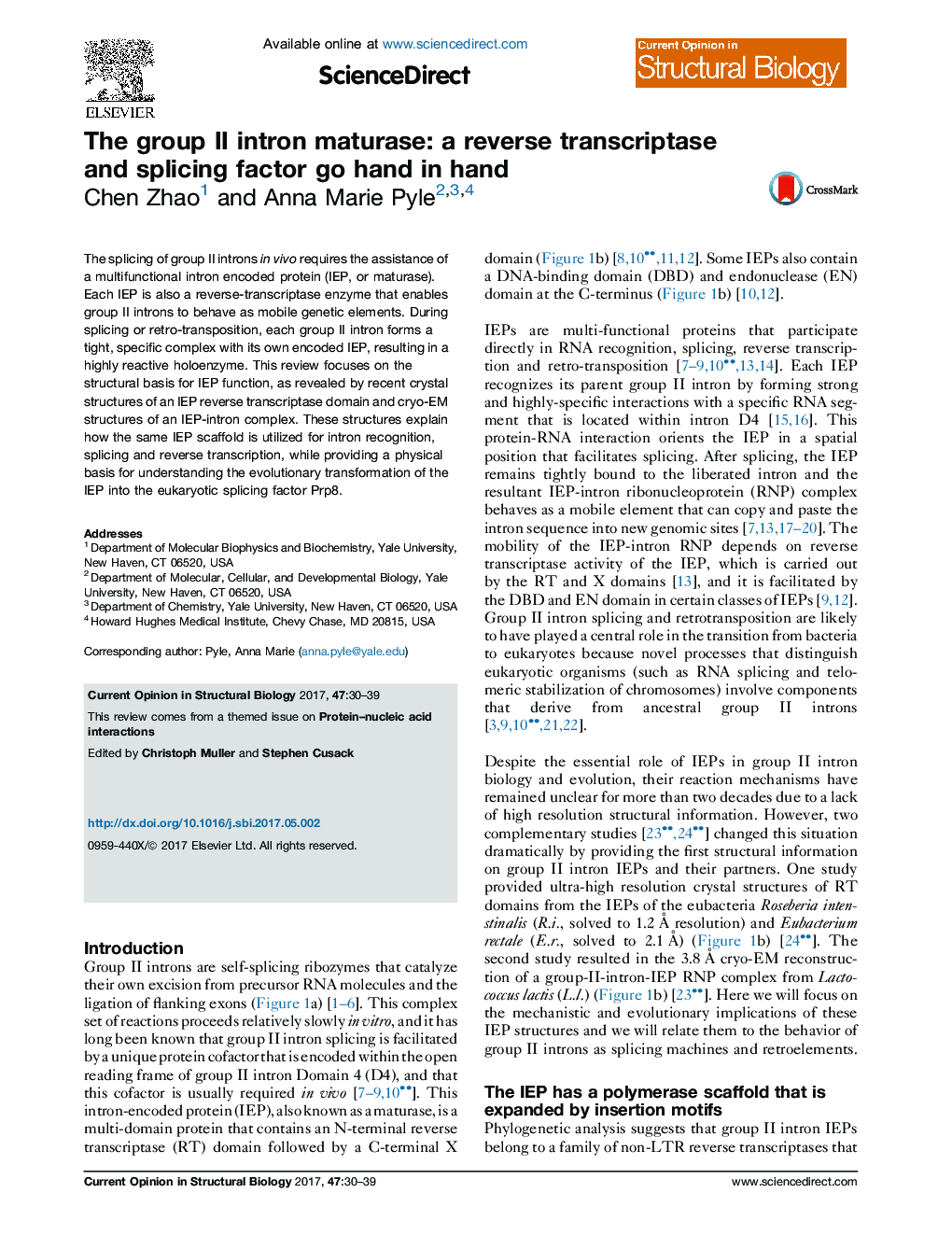| Article ID | Journal | Published Year | Pages | File Type |
|---|---|---|---|---|
| 5510755 | Current Opinion in Structural Biology | 2017 | 10 Pages |
Abstract
The splicing of group II introns in vivo requires the assistance of a multifunctional intron encoded protein (IEP, or maturase). Each IEP is also a reverse-transcriptase enzyme that enables group II introns to behave as mobile genetic elements. During splicing or retro-transposition, each group II intron forms a tight, specific complex with its own encoded IEP, resulting in a highly reactive holoenzyme. This review focuses on the structural basis for IEP function, as revealed by recent crystal structures of an IEP reverse transcriptase domain and cryo-EM structures of an IEP-intron complex. These structures explain how the same IEP scaffold is utilized for intron recognition, splicing and reverse transcription, while providing a physical basis for understanding the evolutionary transformation of the IEP into the eukaryotic splicing factor Prp8.
Related Topics
Life Sciences
Biochemistry, Genetics and Molecular Biology
Biochemistry
Authors
Chen Zhao, Anna Marie Pyle,
